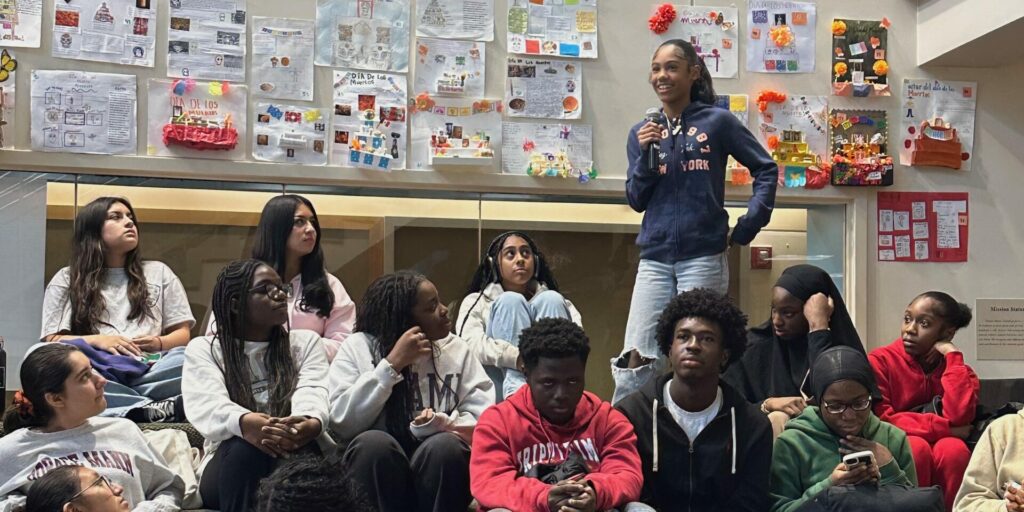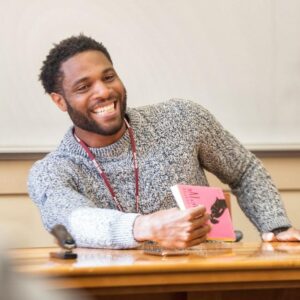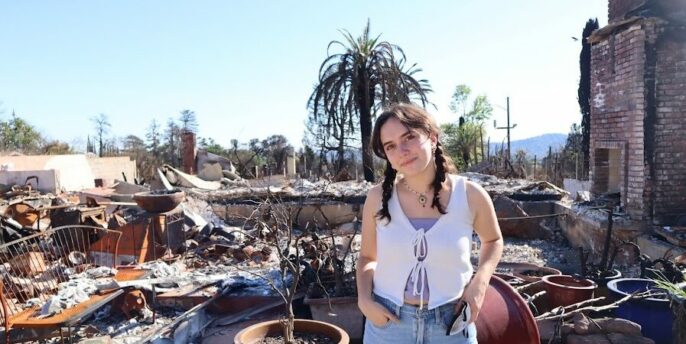In college, I learned I was a “historically marginalized youth.” Reading Kozol’s Savage Inequalities in class, I remember thinking, “I know these environments. I know these people.” But the classroom conversation focused on abstract concepts—“at-risk youth” and “closing achievement gaps”—rather than the actual human beings behind the statistics. While everyone was well-meaning and polite, I grew increasingly frustrated with the deficit-focused language that framed our communities only as broken and in need of a dramatic overhaul.
I knew we had to build something radically different.
Today, as political tensions rise and social divisions deepen across our country, that urgency has only intensified. We’re living through a moment when democracy itself feels fragile, when communities are more polarized than ever, and when young people—particularly those from working-class communities of color like the one that shaped me—are being taught compliance rather than being developed as the leaders we desperately need. This is why NewComm matters right now: not just as a program, but as proof of what becomes possible when we trust young people to lead.
Three years ago, NewComm started with a simple but radical premise: what if we created spaces where historically marginalized young people weren’t just heard, but were centered as the primary architects of change? Not as future leaders, but as current leaders. Not as problems to be solved, but as solutions to be supported. Not as beneficiaries of aid, but as co-creators of community restoration.
The breakthrough came when we reimagined space itself. Instead of accepting that young people from marginalized communities should make do with whatever spaces are available while their wealthier peers access premium facilities, we partnered with Horace Mann School to create what we call community design studios. This wasn’t about access for access’s sake or feel-good partnerships—it was about disrupting the geography of opportunity. For too long, premium educational environments have been reserved for wealthy families while programs serving marginalized communities make do with whatever spaces they can find. We decided that young people from the Bronx and Yonkers deserve the same quality facilities, resources, and respect as their peers from Manhattan’s Upper East Side.
Every month now, NewComm students gather in these community design studios at Horace Mann—not as visitors or guests, but as co-owners of that space, co-creators of its purpose, and co-designers of its future. When NewComm members walk through those doors, the spatial strategy sends a clear message: elite spaces were always meant for you too. The partnership challenges everyone involved. NewComm students experience themselves as belonging in spaces of academic excellence while Horace Mann students, faculty, and families engage with perspectives and experiences that expand their understanding of community and social responsibility. Together, they model what authentic cross-community partnership looks like when it’s rooted in mutual respect rather than simply benevolence.
But the real magic happens inside these studios, where we do something that makes some adults deeply uncomfortable: annually, we give a cohort of teenagers $10,000 and ask them to design and implement community projects that matter to them. This isn’t mock grant-writing or simulation—it’s real money, real deadlines, and real accountability to community stakeholders. Students conduct research, build coalitions, manage budgets, and demonstrate measurable impact while navigating the complex dynamics of working across lines of difference. These aren’t practice rounds but genuine community interventions with tangible outcomes.
When I tell people about this approach, the pushback is immediate and predictable. Aren’t they too young for that kind of responsibility? What if they fail? Shouldn’t they learn to crawl before they walk? But here’s what 11 years of this work has taught me: young people will rise to the expectations we set for them. Set low expectations rooted in deficit thinking, and you’ll get limited results that confirm your biases. Set high expectations within supportive structures, and you’ll witness success that exceeds your imagination.
What we’ve learned from our community design studios is that the question isn’t whether young people are capable of sophisticated leadership—it’s whether adults are ready to create the conditions that make that leadership possible.
Chidi Asoluka
At the same time, those high expectations exist within a culture of genuine care and community. In our community design studios, we also make space for celebration of birthdays, shouting out a big soccer match, or an ask for help on a big science project. In other words, we make space for the full humanity of our members—not just their capacity to solve problems, but their joys, struggles, and everything that makes them whole people.
This combination of high expectations and deep care creates the conditions for remarkable work. The projects emerging from our community design studios demonstrate what becomes possible when young people feel both challenged and supported. In the early days when NewComm was just a high school English elective, students designed a free yoga, dance, and meditation workshop series in a gentrifying Philadelphia neighborhood as a vehicle to share their hopes and fears about their changing community. Last year, students created The Net Gala, a social networking formal ball that brought together professionals in healthcare, law, and finance with the students who aspire to join them—creating authentic avenues for networking and relationship-building across lines of age, race, and class. This year our students designed ProspHER, a women’s empowerment festival on the beautiful campus of the University of Mount Saint Vincent, featuring workshops on financial literacy, wellness through the arts, and career exploration. So far our projects have impacted 300+ people!
What makes these projects especially powerful is how they shatter the false choice between academic rigor and community engagement. When students research gentrification patterns for their workshop series, they’re mastering data analysis and urban studies. When they write proposals for The Net Gala, they’re developing advanced writing and persuasion skills. When they design curriculum for ProspHER’s financial literacy workshops, they’re applying mathematical reasoning to real-world problems. Within the NewComm context, it becomes possible for a student who struggles in traditional English classes to author a compelling speech that influences partners to join their project, or for someone who feels disconnected from Algebra 2 to create a budgeting workshop that other organizations now use. This is what happens when academic work has purpose and meaning—when we stop asking young people to learn about the world and start asking them to shape it.
What we’ve learned from our community design studios is that the question isn’t whether young people are capable of sophisticated leadership—it’s whether adults are ready to create the conditions that make that leadership possible. The model works because it treats young people as they actually are: brilliant, creative, and deeply invested in their communities. When we provide them with real resources, premium spaces, and genuine respect, you have the ingredients necessary for true education reform.
That college classroom where I first encountered my status as a historically marginalized youth feels like a lifetime ago, but the urgency I felt then burns even brighter now. NewComm matters right now because our democracy depends on young people leading, our communities need their vision, and they deserve spaces that honor their brilliance. The time for incremental change is over. The time for bold action is now.




